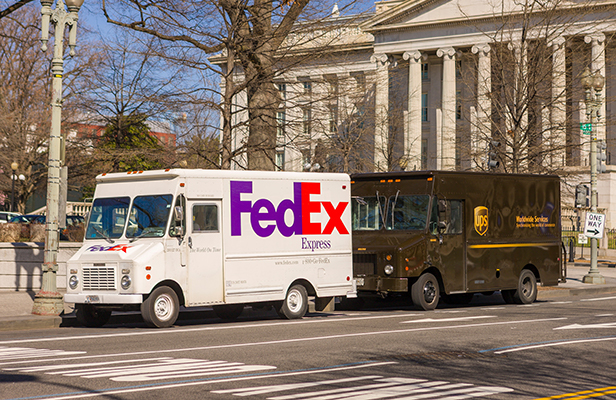January 03, 2020
FedEx, UPS Raise Rates, Expand Package Surcharge
Some promo products executives fear the changes could take a bite out of profits.
It’s going to be more expensive to ship via FedEx and UPS in 2020 – and that could have implications for the promotional products industry.

FedEx Corp. and United Parcel Service (UPS) recently announced that prices to ship will rise by 4.9% on average this year. The multinational courier service companies also said they will now levy a surcharge of $24 on packages weighing 50 pounds or more. The additional handling surcharge threshold had been 70 pounds, meaning the fee is now likely to apply to more packages. Shipware LLC, a shipping consulting firm, told The Wall Street Journal that 14.5% of packages sent by its 100 largest shipper clients would be affected by the $24 fee under the new rules, up from 8.4%.
“UPS periodically evaluates our pricing to ensure the company is compensated for the value we provide,” Matthew O’Connor, UPS’ senior manager of public relations, told Counselor. “Rate increases support ongoing expansion and capabilities enhancements, while maintaining the high service levels UPS customers expect. The weight threshold for applying an additional handling surcharge is being lowered from 70 pounds to 50 pounds per package to compensate for the increased volume and higher cost to transport those packages.”
A FedEx spokeswoman expressed similar sentiments to The Wall Street Journal: “These changes will ensure that we continue to provide the level of service that our customers expect, while responsibly managing capacity through our network.”
UPS implemented the new rates and surcharges on Dec. 29. FedEx plans to do so on Sunday (Jan. 6).
Some promo executives think the heightened rates and heavy package surcharge change will pressure industry companies to do more to offset shipping costs. Relatedly, some believe reduced profits for both suppliers and distributors could result.
For instance, Howard Potter, CEO of Utica, NY-based promo distributor/decorator A&P Master Images, told Counselor that distributors that handle business with customers who spend six figures a year or more “will have their hands full offsetting the costs. They may have to absorb some of the increase from their profit to keep the customer. It could be a case of either deciding to cover the increased shipping cost, or to lose the customer to someone who absorbed the cost difference.”
Meanwhile, the lower threshold for the heavy package levy could influence shipping practices. Boxed, a web-based startup that sells groceries, household products, and health supplies in bulk, told the Journal that it could split up orders into more boxes to avoid the $24 fee on 50 pounds-plus packages. “Customers who get their order in one box may now get it in two,” Joe Bobko, Boxed’s vice president of transportation, told the Journal. The practice could hurt customer satisfaction rates, as multiple boxes may lead to customers not getting their whole order at once.
Both UPS and FedEX announced other changes that could result in steeper costs for customers. Review the full UPS changes here, and the FedEX information here. FedEx’s changes include additional surcharges related to fuel. UPS changes include that a rebill fee will be assessed for each request to change the billing account for a shipment, while value-added services and other charges will apply to undeliverable packages returned to the shipper. The list of ZIP codes to which UPS’ “Delivery Area Surcharges” and “Extended Area Surcharges” apply will be different.